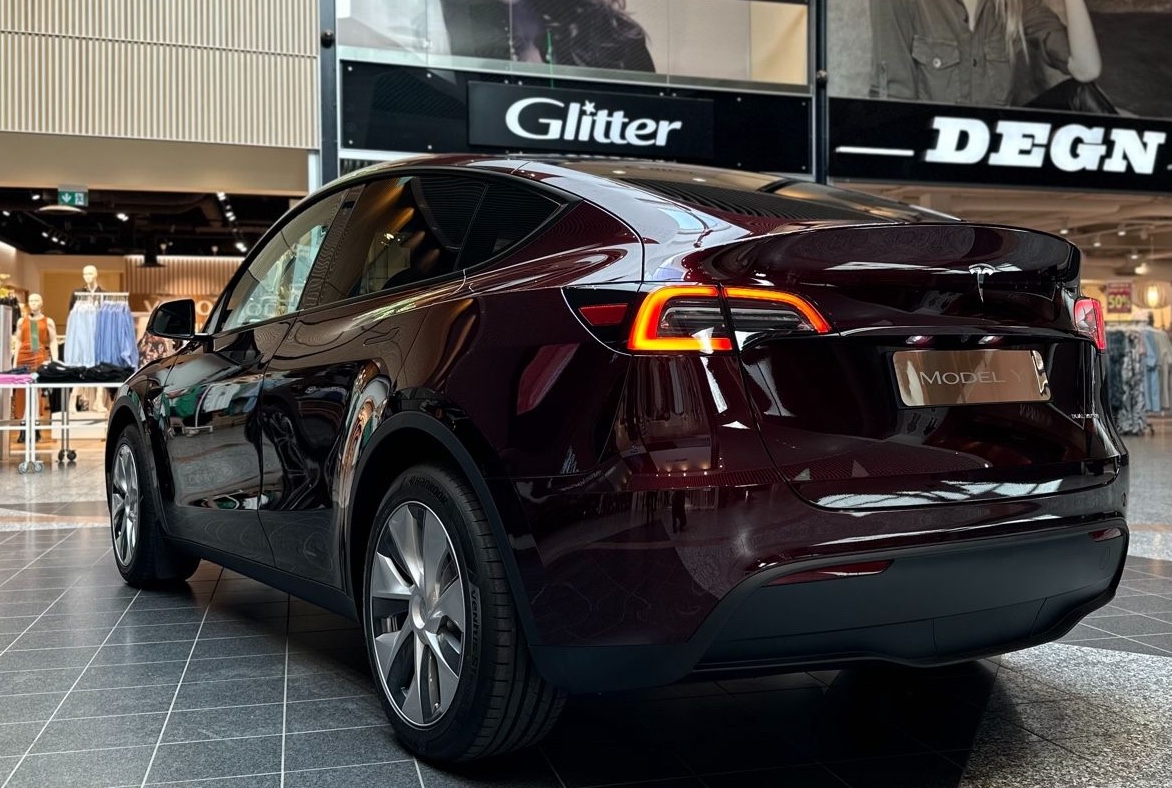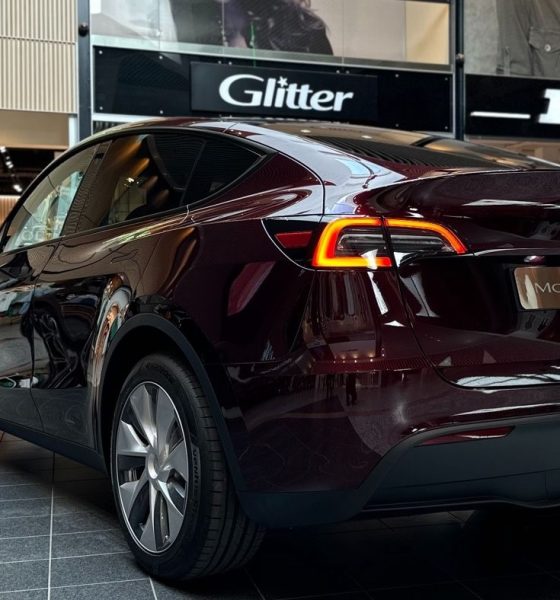

News
Tesla short seller Jim Chanos hit with lawsuit from partner over alleged fund misuse
Aggressive Tesla short seller Jim Chanos has been sued by a partner who is accusing the famed short-seller of using company funds for his personal use.
Conlon Holdings, an investment firm that invested in Chanos’ firm in 2020, alleged that the famed short-seller treated the company “like a piggy bank” for personal gain, as noted in a Bloomberg News report. The lawsuit was filed in New York State court over the weekend.
Conlon Holdings’ complaint centered on $10 million in loans that Chanos reportedly borrowed from his firm, Chanos & Co. (formerly known as Kynikos Associates), over more than a decade. Conlon alleged that the short-seller “never intended on paying the company back, but instead planned on using his power as general partner to run the company into the ground, enjoy the tax benefits of his financial shenanigans, and leave his partners with nothing.”
The suit further claimed that Chanos had sold a luxury Miami apartment owned by Chanos & Co. for $17.8 million without informing his partners. The sale reportedly resulted in Chanos’ girlfriend, Crystal Conners — who was the sales agent in the deal — earning $540,000 in commission. “In other words, Chanos not only sold the company’s property but did so in a way that he could pay his girlfriend more than half a million dollars of money that did not belong to him,” the suit noted.
Jim Chanos, for his part, has denied the allegations, dubbing Conlon’s lawsuit as ”puzzling and baseless.” “The facts will show that the internal loan in question from the company was paid off in 2021,” he noted. Interestingly enough, Chanos’ former chief financial officer Brian Nichols noted in an affidavit that his boss acknowledged that the loan was still outstanding as part of his tax return in 2022.
Conlon Holdings is looking to prevent Chanos from accessing the proceeds from the Miami apartment sale. Conlon is also demanding that Chanos be removed as general partner of his firm.
Chanos’ fame stemmed from successfully shorting Enron stock in 2000. He was also one of Tesla’s most aggressive critics, announcing in 2017 that he believed the electric vehicle maker’s equity was worthless, and that his price target for TSLA stock was zero. By 2018, Chanos claimed that the Model 3 was “looking to be a lemon.”
It’s not just that he would short Tesla, he would also push false stories about Tesla in the media, who performed for him like circus poodles!— Elon Musk (@elonmusk) May 29, 2024
Needless to say, Chanos was unsuccessful in his efforts to short Tesla, and last year, he announced that he was closing his fund. His fund has gotten substantially smaller, dropping to less than $200 million in 2023 from $8 billion in 2008. Elon Musk, for his part, commented on Chanos’ recent legal troubles, noting that the short seller did not just bet against Tesla — he also pushed false narratives that the media embraced.
Don’t hesitate to contact us with news tips. Just send a message to simon@teslarati.com to give us a heads up.

News
Tesla China quietly posts Robotaxi-related job listing
Tesla China is currently seeking a Low Voltage Electrical Engineer to work on circuit board design for the company’s autonomous vehicles.

Tesla has posted a new job listing in Shanghai explicitly tied to its Robotaxi program, fueling speculation that the company is preparing to launch its dedicated autonomous ride-hailing service in China.
As noted in the listing, Tesla China is currently seeking a Low Voltage Electrical Engineer to work on circuit board design for the company’s autonomous vehicles.
Robotaxi-specific role
The listing, which was shared on social media platform X by industry watcher @tslaming, suggested that Tesla China is looking to fill the role urgently. The job listing itself specifically mentions that the person hired for the role will be working on the Low Voltage Hardware team, which would design the circuit boards that would serve as the nervous system of the Robotaxi.
Key tasks for the role, as indicated in the job listing, include collaboration with PCB layout, firmware, mechanical, program management, and validation teams, among other responsibilities. The role is based in Shanghai.
China Robotaxi launch
China represents a massive potential market for robotaxis, with its dense urban centers and supportive policies in select cities. Tesla has limited permission to roll out FSD in the country, though despite this, its vehicles have been hailed as among the best in the market when it comes to autonomous features. So far, at least, it appears that China supports Tesla’s FSD and Robotaxi rollout.
This was hinted at in November, when Tesla brought the Cybercab to the 8th China International Import Expo (CIIE) in Shanghai, marking the first time that the autonomous two-seater was brought to the Asia-Pacific region. The vehicle, despite not having a release date in China, received a significant amount of interest among the event’s attendees.
Elon Musk
Elon Musk and Tesla AI Director share insights after empty driver seat Robotaxi rides
The executives’ unoccupied tests hint at the rapid progress of Tesla’s unsupervised Robotaxi efforts.

Tesla CEO Elon Musk and AI Director Ashok Elluswamy celebrated Christmas Eve by sharing personal experiences with Robotaxi vehicles that had no safety monitor or occupant in the driver’s seat. Musk described the system’s “perfect driving” around Austin, while Elluswamy posted video from the back seat, calling it “an amazing experience.”
The executives’ unoccupied tests hint at the rapid progress of Tesla’s unsupervised Robotaxi efforts.
Elon and Ashok’s firsthand Robotaxi insights
Prior to Musk and the Tesla AI Director’s posts, sightings of unmanned Teslas navigating public roads were widely shared on social media. One such vehicle was spotted in Austin, Texas, which Elon Musk acknowleged by stating that “Testing is underway with no occupants in the car.”
Based on his Christmas Eve post, Musk seemed to have tested an unmanned Tesla himself. “A Tesla with no safety monitor in the car and me sitting in the passenger seat took me all around Austin on Sunday with perfect driving,” Musk wrote in his post.
Elluswamy responded with a 2-minute video showing himself in the rear of an unmanned Tesla. The video featured the vehicle’s empty front seats, as well as its smooth handling through real-world traffic. He captioned his video with the words, “It’s an amazing experience!”
Towards Unsupervised operations
During an xAI Hackathon earlier this month, Elon Musk mentioned that Tesla owed be removing Safety Monitors from its Robotaxis in Austin in just three weeks. “Unsupervised is pretty much solved at this point. So there will be Tesla Robotaxis operating in Austin with no one in them. Not even anyone in the passenger seat in about three weeks,” he said. Musk echoed similar estimates at the 2025 Annual Shareholder Meeting and the Q3 2025 earnings call.
Considering the insights that were posted Musk and Elluswamy, it does appear that Tesla is working hard towards operating its Robotaxis with no safety monitors. This is quite impressive considering that the service was launched just earlier this year.
Elon Musk
Starlink passes 9 million active customers just weeks after hitting 8 million
The milestone highlights the accelerating growth of Starlink, which has now been adding over 20,000 new users per day.

SpaceX’s Starlink satellite internet service has continued its rapid global expansion, surpassing 9 million active customers just weeks after crossing the 8 million mark.
The milestone highlights the accelerating growth of Starlink, which has now been adding over 20,000 new users per day.
9 million customers
In a post on X, SpaceX stated that Starlink now serves over 9 million active users across 155 countries, territories, and markets. The company reached 8 million customers in early November, meaning it added roughly 1 million subscribers in under seven weeks, or about 21,275 new users on average per day.
“Starlink is connecting more than 9M active customers with high-speed internet across 155 countries, territories, and many other markets,” Starlink wrote in a post on its official X account. SpaceX President Gwynne Shotwell also celebrated the milestone on X. “A huge thank you to all of our customers and congrats to the Starlink team for such an incredible product,” she wrote.
That growth rate reflects both rising demand for broadband in underserved regions and Starlink’s expanding satellite constellation, which now includes more than 9,000 low-Earth-orbit satellites designed to deliver high-speed, low-latency internet worldwide.
Starlink’s momentum
Starlink’s momentum has been building up. SpaceX reported 4.6 million Starlink customers in December 2024, followed by 7 million by August 2025, and 8 million customers in November. Independent data also suggests Starlink usage is rising sharply, with Cloudflare reporting that global web traffic from Starlink users more than doubled in 2025, as noted in an Insider report.
Starlink’s momentum is increasingly tied to SpaceX’s broader financial outlook. Elon Musk has said the satellite network is “by far” the company’s largest revenue driver, and reports suggest SpaceX may be positioning itself for an initial public offering as soon as next year, with valuations estimated as high as $1.5 trillion. Musk has also suggested in the past that Starlink could have its own IPO in the future.








